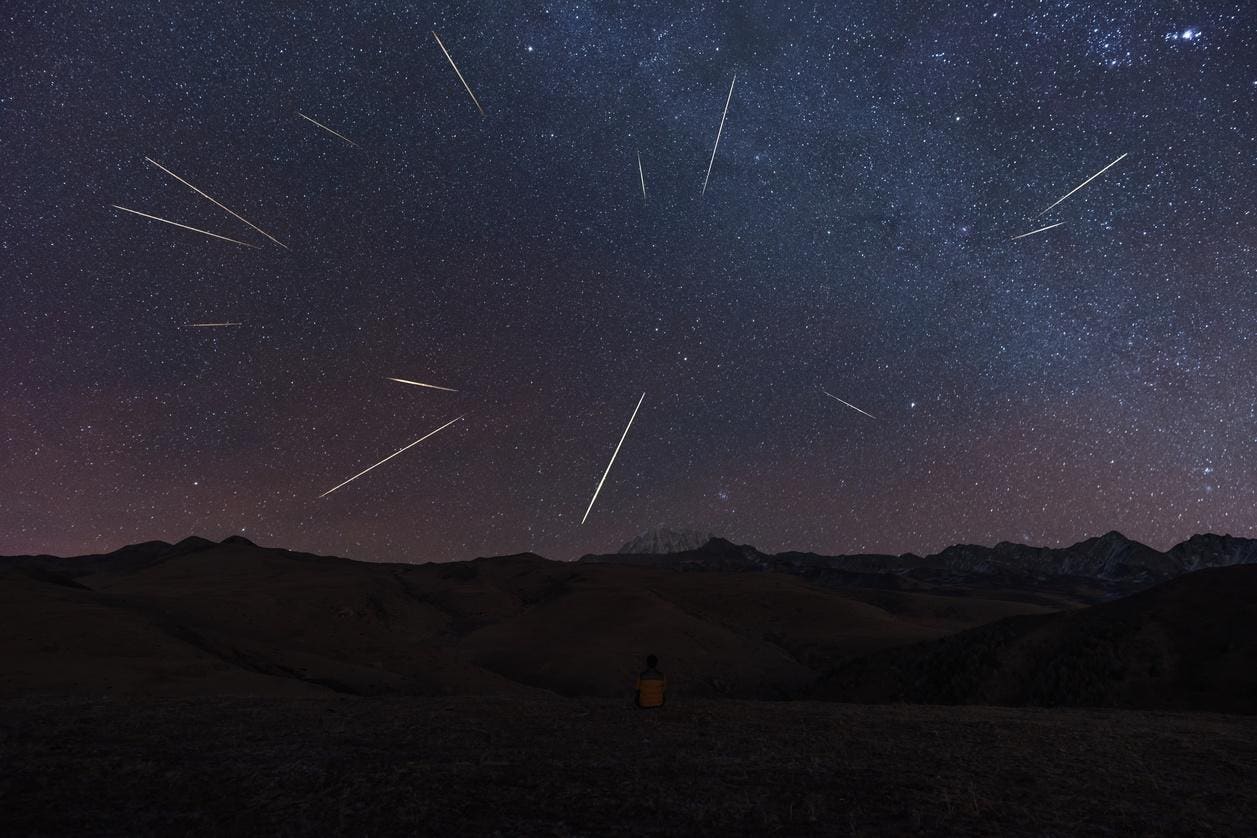The Geminids, the northern hemisphere’s most spectacular meteor shower of the year, has begun.
The only annual meteor shower caused by an asteroid rather than a comet, the Geminids run from November 19 through December 24 this year, peaking overnight on Wednesday, December 13 through Thursday, December 14. The maximum number of “shooting stars” per hour it’s possible to see is 150, making the Geminid meteor shower the strongest of the year.
Why 2023 Is A Great Year For The Geminids
The biggest problem with “shooting stars” is seeing them in a dark sky. Usually, the main issue is light pollution from streetlights and buildings, but the phase of the moon can also often make meteors impossible to see wherever on Earth you observe from. Not so this year, with New Mon occurring on December 13. That will leave dark skies for the peak nights of the Geinds.
Why The Geminids Are Special
The Geminid meteor shower is an extraordinary event for stargazers, though it gets less publicity than the Perseids meteor shower in August. It’s much-loved by die-hards because of the color of its “shooting stars,” which can be white, yellow and green.
They can also be very bright, with the beautifully bright stars of winter—in Orion, Taurus and the source constellation, Gemini—shining in the southeast after dark.
When And How To See The Geminids
There is, of course, one big problem—it’s cold in December above the equator. That makes it imperative that you wrap up warmly if you’re thinking of venturing into the night to catch a Geminid or two.
However, there is some good news—the Geminids provide good activity before midnight, according to the American Meteor Society, precisely because the constellation Gemini is already high above the horizon.
It will be too cold—with too high a chance of clouds—to visit an International Dark Sky Park for the Geminids, so this is a meteor shower to enjoy at home. Besides, even if you’re in a city, the intensity of some of its meteors means you’ll have a better-than-usual chance of seeing a “shooting star” or two. Here’s what you need to know to see the Geminid meteor shower:
You’ll need clear skies—clouds will block everything.
- Plan to be outside from around 10:00 p.m. local time on Wednesday, December 13.
- Wrap up warm, moving around frequently, though a lawn chair will make it easier on your neck.
- Be patient and keep looking at the stars of Orion, Gemini and Taurus.
- Don’t look at your smartphone, which will remove any dark adaption in your eyes and make “shooting stars” more challenging to see.
- Don’t use binoculars or a telescope—they will only restrict your view.
- Take a break every 30 minutes and go inside (preferably into a warm, but dark room).
What Causes The Geminid Meteor Shower
All “shooting stars” are caused by dust and dirt striking Earth’s atmosphere, though usually the source is a passing comet. For the Geminids, it’s 3200 Phaethon, a weird asteroid that takes 1.4 Earth-years to orbit the sun and which brightens and forms a tail when it’s near the sun.
According to NASA, scientists think that 3200 Phaethon may have broken apart under the stresses of Phaethon’s rotation, which caused it to eject billions of tons of dust and debris into the solar system. Cue the Geminids—the year’s best, last and least talked about multicolored meteor shower.
Wishing you clear skies and wide eyes.
Read the full article here





